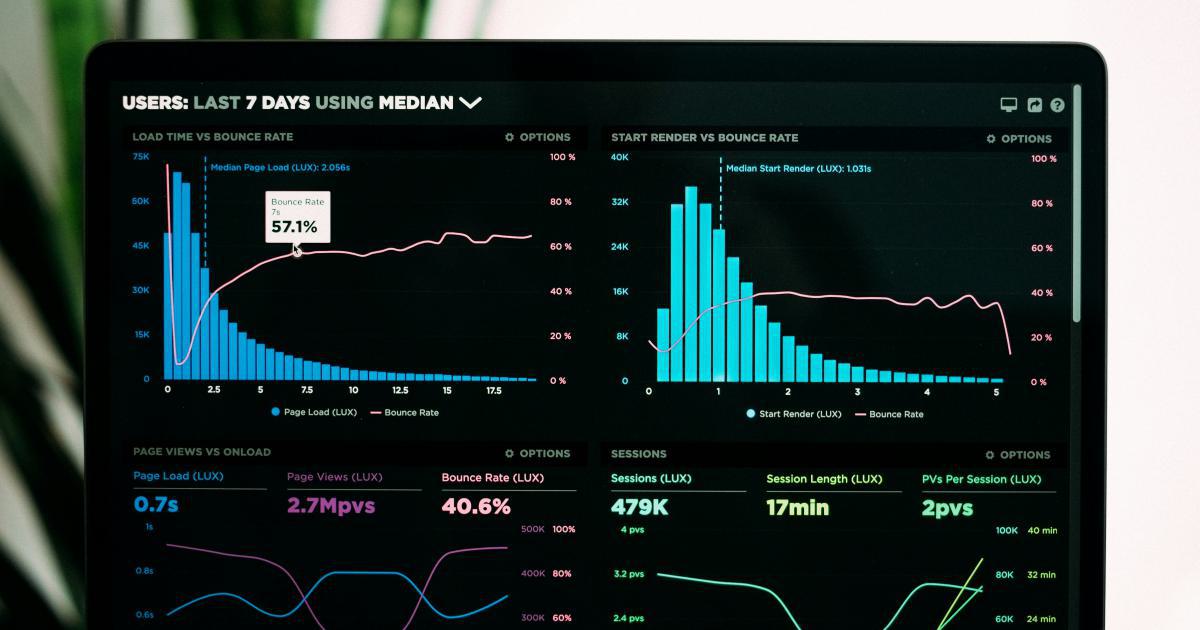Maximize Growth with Tactical Shopping Cart Metrics


Understanding the Importance of Shopping Cart Metrics
The shopping cart is the heart of any ecommerce business, serving as the final step in the customer journey. By closely monitoring and analyzing various shopping cart metrics, online retailers can gain invaluable insights to optimize their website, improve the customer experience, and ultimately drive significant business growth.
Shopping cart metrics provide a wealth of data that can reveal pain points, identify opportunities for improvement, and measure the overall effectiveness of your ecommerce strategy. From conversion rates and abandonment rates to average order value and customer lifetime value, these key performance indicators (KPIs) offer a comprehensive view of your business's health and performance.

In this comprehensive article, we'll explore the most critical shopping cart metrics and delve into strategies to leverage this data for maximum impact. By understanding the dynamics of your shopping cart, you'll be empowered to make informed decisions, enhance the customer experience, and ultimately drive sustainable growth for your ecommerce business.
Identifying Key Shopping Cart Metrics
To maximize the potential of your shopping cart, it's essential to identify and track the most relevant metrics. These metrics can be divided into several categories, each providing valuable insights into different aspects of your business.
Conversion Rate
The conversion rate is a fundamental metric that measures the percentage of visitors who complete a purchase. This KPI is a clear indicator of how effectively your website is converting potential customers into paying customers. A high conversion rate suggests that your ecommerce experience is engaging, user-friendly, and tailored to the needs of your target audience.
To calculate the conversion rate, use the following formula: Conversion Rate = (Total Purchases / Total Visitors) x 100
By monitoring and optimizing your conversion rate, you can identify areas for improvement, such as streamlining the checkout process, enhancing product presentation, or addressing any friction points in the customer journey.

Abandonment Rate
The abandonment rate measures the percentage of customers who add items to their cart but fail to complete the checkout process. This metric is crucial in understanding where and why customers are dropping off during the purchase journey.
To calculate the abandonment rate, use the following formula: Abandonment Rate = (Total Abandoned Carts / Total Initiated Checkouts) x 100
A high abandonment rate may indicate issues with your shopping cart, such as complicated checkout procedures, lack of payment options, or concerns about security and trust. By analyzing the abandonment rate and identifying the primary reasons for cart abandonment, you can implement targeted strategies to reduce this metric and improve the overall customer experience.

Average Order Value (AOV)
The average order value (AOV) is the average amount of money a customer spends per transaction. This metric provides insights into the perceived value of your products and the effectiveness of your pricing and upselling/cross-selling strategies.
To calculate the AOV, use the following formula: Average Order Value = Total Revenue / Total Number of Orders
By monitoring and optimizing your AOV, you can identify opportunities to increase the average spend per customer, such as offering complementary products, bundle deals, or strategic pricing adjustments.

Customer Lifetime Value (CLV)
Customer lifetime value (CLV) is a crucial metric that estimates the total revenue a customer is expected to generate over the course of their relationship with your business. This metric is particularly important for understanding the long-term value of your customer base and guiding customer acquisition and retention strategies.
To calculate the CLV, use the following formula: Customer Lifetime Value = (Average Order Value x Purchase Frequency) / Churn Rate
A high CLV indicates that your customers are highly engaged, loyal, and valuable to your business. By understanding and optimizing your CLV, you can focus on acquiring and retaining the most profitable customers, ultimately driving sustainable growth.

Additional Metrics
While the metrics mentioned above are critical, there are several other shopping cart metrics that can provide valuable insights, including:
- Cart Abandonment Points: Identify specific steps in the checkout process where customers are most likely to abandon their carts.
- Repeat Purchase Rate: Measure the percentage of customers who make multiple purchases, indicating customer loyalty and satisfaction.
- Shopping Cart Recovery Rate: Analyze the effectiveness of your cart abandonment recovery strategies, such as abandoned cart emails.
- Mobile Conversion Rate: Evaluate the performance of your mobile shopping experience and identify any device-specific optimization opportunities.
By monitoring and optimizing this comprehensive set of shopping cart metrics, you can gain a deeper understanding of your customer behavior, identify areas for improvement, and implement targeted strategies to drive growth and profitability.
Leveraging Shopping Cart Metrics for Actionable Insights
Now that we've covered the key shopping cart metrics, let's explore how you can leverage this data to drive meaningful improvements and maximize the growth of your ecommerce business.
Identify and Address Friction Points
One of the primary uses of shopping cart metrics is to identify friction points in the customer journey. By analyzing metrics like abandonment rate, cart abandonment points, and conversion rate, you can pinpoint the specific steps where customers are dropping off and take corrective action.
For example, if you notice a high abandonment rate during the checkout process, you might investigate the potential causes, such as:
- Overly complex or confusing checkout forms
- Lack of payment options or preferred payment methods
- Concerns about security or trust in the checkout process
- Unexpected shipping costs or delivery timelines
By addressing these friction points, you can streamline the customer experience, reduce abandonment, and ultimately increase conversions.

Optimize the Shopping Cart Experience
Beyond addressing friction points, shopping cart metrics can also inform broader optimizations to the shopping cart experience. By analyzing data such as average order value and repeat purchase rate, you can identify opportunities to enhance the customer journey and increase the overall value of each transaction.
Some strategies for optimizing the shopping cart experience include:
- Implementing upsell and cross-sell recommendations to increase AOV
- Offering personalized product suggestions based on customer browsing and purchase history
- Simplifying the checkout process and reducing the number of steps required to complete a purchase
- Providing clear and transparent information about shipping costs, delivery timelines, and return policies
- Offering a variety of payment options, including alternative payment methods like digital wallets or buy-now-pay-later solutions
By continuously monitoring and iterating on the shopping cart experience, you can create a frictionless, engaging, and value-driven customer journey that drives growth and loyalty.

Enhance Customer Acquisition and Retention Strategies
Shopping cart metrics can also inform your broader customer acquisition and retention strategies. By understanding the lifetime value of your customers, you can tailor your marketing efforts to target the most valuable segments and invest resources in the most profitable acquisition channels.
For instance, if your analysis reveals that customers acquired through a specific marketing channel have a higher CLV, you can allocate more budget to that channel and refine your targeting and messaging to attract similar high-value customers.
Similarly, by monitoring metrics like repeat purchase rate and cart recovery rate, you can identify opportunities to improve customer retention and loyalty. This might involve implementing targeted loyalty programs, personalized email campaigns, or other strategies to encourage repeat business and reduce churn.

Inform Strategic Decision-Making
Ultimately, the insights gleaned from shopping cart metrics should inform the strategic decision-making process within your ecommerce business. By aligning these metrics with your overall business objectives, you can make data-driven decisions that drive growth, improve profitability, and enhance the customer experience.
For example, if your analysis reveals that a particular product category has a significantly higher AOV and CLV compared to others, you might consider reallocating resources to focus on that category, such as increasing inventory, enhancing product presentation, or developing targeted marketing campaigns.
Conversely, if a specific checkout step or payment option is contributing to a high abandonment rate, you can prioritize addressing that issue, even if it requires a more significant investment of time and resources.
By leveraging shopping cart metrics to inform strategic decisions, you can ensure that your ecommerce business remains agile, responsive, and aligned with the evolving needs and preferences of your customer base.

Implementing a Robust Tracking and Optimization Framework
To effectively leverage shopping cart metrics for growth, it's crucial to implement a comprehensive tracking and optimization framework. This framework should encompass the following key components:
Data Collection and Tracking
Ensure that you have robust data collection and tracking mechanisms in place to capture the necessary shopping cart metrics. This may involve integrating your ecommerce platform with a web analytics tool, such as Google Analytics, or utilizing specialized ecommerce analytics solutions.
Carefully define the specific metrics you want to track, establish clear data collection processes, and regularly audit your data to ensure accuracy and completeness.
Segmentation and Analysis
Once you have collected the relevant data, segment your customer base and analyze the shopping cart metrics across different dimensions, such as:
- Customer demographics (age, gender, location, etc.)
- Traffic sources (organic, paid, referral, etc.)
- Device types (desktop, mobile, tablet)
- Product categories or individual products
- New vs. returning customers
This segmentation will enable you to identify patterns, trends, and unique insights that can inform targeted optimization strategies.

Hypothesis Testing and Experimentation
Based on the insights gleaned from your data analysis, develop hypotheses about potential improvements to the shopping cart experience. Then, design and implement A/B tests or multivariate experiments to validate these hypotheses and measure the impact of your changes.
Continuously test and iterate on various elements of the shopping cart, such as the checkout flow, product presentation, pricing strategies, and marketing messaging. This approach will help you identify the most effective optimizations and ensure that your ecommerce business remains adaptable and responsive to customer needs.

Ongoing Monitoring and Optimization
Establish a regular cadence for monitoring and evaluating your shopping cart metrics. Review the data on a weekly or monthly basis, identify trends and patterns, and continuously refine your optimization strategies based on the results.
Remember that ecommerce is a dynamic landscape, and customer preferences and behaviors can evolve over time. By maintaining a vigilant approach to monitoring and optimization, you can stay ahead of the curve and ensure that your shopping cart remains a key driver of growth and profitability.

Conclusion
In the rapidly evolving world of ecommerce, a deep understanding and strategic optimization of your shopping cart metrics can be the difference between stagnation and exponential growth. By leveraging the insights gleaned from conversion rates, abandonment rates, average order values, and customer lifetime values, you can create a seamless, engaging, and value-driven customer experience that keeps your customers coming back.
Remember, the key to success lies in a comprehensive, data-driven approach to shopping cart optimization. Continuously monitor your metrics, identify and address friction points, enhance the customer journey, and make strategic decisions that align with your business objectives. By doing so, you'll position your ecommerce business for sustained growth and long-term success.